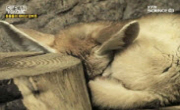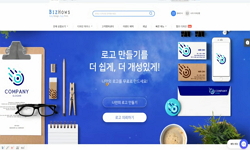King Gojong, the king of the Joseon Dynasty, promoted the red ginseng monopoly system in earnest with Lee Yong-ik in 1896. Lee Yong-ik personally went to Kaesong and declared the royal red ginseng policy. The royal red ginseng policy focused on cracki...
http://chineseinput.net/에서 pinyin(병음)방식으로 중국어를 변환할 수 있습니다.
변환된 중국어를 복사하여 사용하시면 됩니다.
- 中文 을 입력하시려면 zhongwen을 입력하시고 space를누르시면됩니다.
- 北京 을 입력하시려면 beijing을 입력하시고 space를 누르시면 됩니다.

한말(1896-1897) 왕실의 홍삼 정책과 수출 연구 = A Study on the Policy and Export of Red Ginseng in the Joseon Dynasty between 1896 and 1897
한글로보기https://www.riss.kr/link?id=A109136891
-
저자
양정필 (제주대학교)
- 발행기관
- 학술지명
- 권호사항
-
발행연도
2024
-
작성언어
Korean
-
주제어
Red ginseng ; monopoly ; Lee Yong-ik ; Gaeseong ; King Gojong ; 홍삼 ; 전매제 ; 이용익 ; 개성 ; 고종
-
등재정보
KCI등재
-
자료형태
학술저널
-
수록면
139-166(28쪽)
- DOI식별코드
- 제공처
- 소장기관
-
0
상세조회 -
0
다운로드
부가정보
다국어 초록 (Multilingual Abstract)
King Gojong is said to have instructed Lee Yong-ik to go to Kaesong to manufacture 15,000Geun[斤] of red ginseng while managing the Sampo business. There is a 「Gaeseong Red Ginseng Data 開城造蔘成冊」 that recorded the production of red ginseng this year. The amount of red ginseng in this data is 16,880 Geun. This is a quantity manufactured by the royal family. Private ginseng merchants also manufactured over 9,000 Geun of red ginseng. They also raised funds related to the manufacture of red ginseng from foreigners. It was illegal for foreigners to manufacture and export red ginseng. That’s why foreigners are understood to have pursued profits in the form of partnerships with Korean red ginseng manufacturers.
In 1897, the royal palace became legally the department in charge of the three governments. The legal basis for the royal red ginseng policy was established. And the number of red ginseng produced in this year increased from the previous year. Looking at this, it can be seen that the production of red ginseng in this year has also progressed smoothly. However, little progress has been made in the royal red ginseng monopoly. The reason is that Lee Yong-ik, who was a key promoter, was unable to oversee the three administrations because he had most of his interests as a prisoner. As a result, measures such as collective purchase of sams, which are essential for the red ginseng project, were not implemented. Through this, it can be seen that the existence of Lee Yong-ik was very important in the process of the royal red ginseng project.
King Gojong, the king of the Joseon Dynasty, promoted the red ginseng monopoly system in earnest with Lee Yong-ik in 1896. Lee Yong-ik personally went to Kaesong and declared the royal red ginseng policy. The royal red ginseng policy focused on cracking down on smuggled red ginseng. If smuggled red ginseng is prevalent, it is difficult for the royal family to fully capture the profits even if red ginseng is transferred. That is why the royal family implemented a policy focused on cracking down on smuggled red ginseng from the beginning. In fact, Lee Yong-ik mobilized police officers and troops to thoroughly crack down on smuggled red ginseng in Kaesong. A strong crackdown on smuggled red ginseng has never happened before. This was a big feature of the royal red ginseng policy.
King Gojong is said to have instructed Lee Yong-ik to go to Kaesong to manufacture 15,000Geun[斤] of red ginseng while managing the Sampo business. There is a 「Gaeseong Red Ginseng Data 開城造蔘成冊」 that recorded the production of red ginseng this year. The amount of red ginseng in this data is 16,880 Geun. This is a quantity manufactured by the royal family. Private ginseng merchants also manufactured over 9,000 Geun of red ginseng. They also raised funds related to the manufacture of red ginseng from foreigners. It was illegal for foreigners to manufacture and export red ginseng. That’s why foreigners are understood to have pursued profits in the form of partnerships with Korean red ginseng manufacturers.
In 1897, the royal palace became legally the department in charge of the three governments. The legal basis for the royal red ginseng policy was established. And the number of red ginseng produced in this year increased from the previous year. Looking at this, it can be seen that the production of red ginseng in this year has also progressed smoothly. However, little progress has been made in the royal red ginseng monopoly. The reason is that Lee Yong-ik, who was a key promoter, was unable to oversee the three administrations because he had most of his interests as a prisoner. As a result, measures such as collective purchase of sams, which are essential for the red ginseng project, were not implemented. Through this, it can be seen that the existence of Lee Yong-ik was very important in the process of the royal red ginseng project.
동일학술지(권/호) 다른 논문
-
의사 수련제도의 역사적 기원 -프랑스 인턴 제도를 중심으로-
- 연세대학교 의학사연구소
- 여인석
- 2024
- KCI등재
-
"일에서 교육으로" -20세기 미국 의사 수련제도 형성의 역사-
- 연세대학교 의학사연구소
- 공혜정
- 2024
- KCI등재
-
- 연세대학교 의학사연구소
- 이경록
- 2024
- KCI등재
-
해방 이후 한국 전문의 제도의 기원과 전개 과정 -1950~1970년대를 중심으로-
- 연세대학교 의학사연구소
- 김택중
- 2024
- KCI등재




 KCI
KCI KISS
KISS







